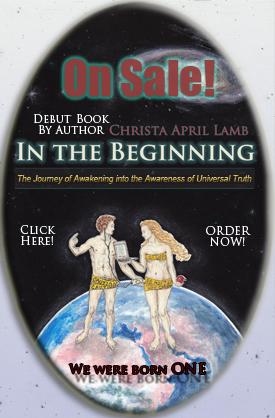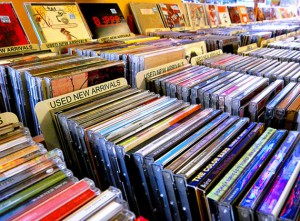Music of the United States
About: The music of the United States reflects the country’s multi-ethnic population through a diverse array of styles. Among the country’s most internationally-renowned genres are Hip hop, blues, country, rhythm and blues, jazz, pop, techno, and rock and roll. The United States has the world’s largest music industry and its music is heard around the world. Since the beginning of the 20th century, some forms of American popular music have gained a near global audience.
Native Americans were the earliest inhabitants of the land that is today known as the United States and played its first music. Beginning in the 17th century, immigrants from the United Kingdom, Ireland, Spain, Germany and France began arriving in large numbers, bringing with them new styles and instruments. African slaves brought musical traditions, and each subsequent wave of immigrants contributed to a melting pot.
Much of modern popular music can trace its roots to the emergence in the late 19th century of African American blues and the growth of gospel music in the 1920s. The African American basis for popular music used elements derived from European and indigenous musics. The United States has also seen documented folk music and recorded popular music produced in the ethnic styles of the Ukrainian, Irish, Scottish, Polish, Hispanic and Jewish communities, among others.
Many American cities and towns have vibrant music scenes which, in turn, support a number of regional musical styles. Along with musical centers such as Seattle, New York City, San Francisco, New Orleans, Detroit, Minneapolis, Chicago, Nashville, Austin, and Los Angeles, many smaller cities have produced distinctive styles of music. The Cajun and Creole traditions in Louisiana music, the folk and popular styles of Hawaiian music, and the bluegrass and old time music of the Southeastern states are a few examples of diversity in American music.1
Similarities to other music styles: See influences.
Influences: The United States is often said to be a cultural melting pot, taking in influences from across the world and creating distinctively new methods of cultural expression. Though aspects of American music can be traced back to specific origins, claiming any particular original culture for a musical element is inherently problematic, due to the constant evolution of American music through transplanting and hybridizing techniques, instruments and genres. Elements of foreign musics arrived in the United States both through the formal sponsorship of educational and outreach events by individuals and groups, and through informal processes, as in the incidental transplantation of West African music through slavery, and Irish music through immigration. The most distinctly American musics are a result of cross-cultural hybridization through close contact. Slavery, for example, mixed persons from numerous tribes in tight living quarters, resulting in a shared musical tradition that was enriched through further hybridizing with elements of indigenous, Latin and European music. American ethnic, religious and racial diversity has also produced such intermingled genres as the French-African music of the Louisiana Creoles, the Native, Mexican and European fusion Tejano music and the thoroughly hybridized slack-key guitar and other styles of modern Hawaiian music.
The process of transplanting music between cultures is not without criticism. The folk revival of the mid-20th century, for example, appropriated the musics of various rural peoples, in part to promote certain political causes, which has caused some to question whether the process caused the “commercial commodification of other peoples’ songs… and the inevitable dilution of mean” in the appropriated musics. The issue of cultural appropriation has also been a major part of racial relations in the United States. The use of African American musical techniques, images and conceits in popular music largely by and for white Americans has been widespread since at least the mid-19th century songs of Stephen Foster and the rise of minstrel shows. The American music industry has actively attempted to popularize white performers of African American music because they are more palatable to mainstream and middle-class Americans. This process has produced such varied stars as Benny Goodman, Eminem and Elvis Presley, as well as popular styles like blue-eyed soul and rockabilly.1
DISCOVER MORE
Article from Nat Geo Music
American music is, at its heart, the story of the immigrant experience. Even the Native Americans, the continent’s oldest inhabitants, originally came from overseas. These immigrants brought their culture, and music, with them. A few managed to preserve their music traditions intact, but many more adapted their songs, their dances and their instruments to better fit their lives in the New World – helping give birth to America’s vibrant, mongrel pop music.
African slaves had no choice about America. Plantation owners, scared that slaves would foment rebellion with their drums, often outlawed traditional African drumming, so that slaves turned to European instruments such as the fiddle and guitar – not to mention the banjo, a uniquely American instrument thought to be adapted from the West African banza. There were also concerted efforts to convert this new population to Christianity. Religion largely took hold among the slaves, and African-Americans developed a religious aesthetic all their own.
The ” Negro spiritual,” as it was called, really became known after the Civil War. It wasn’t until the early 20th century that gospel music as we now know it really began, featuring singers like Mahalia Jackson. But if gospel was the sound of Sunday morning, the blues was Saturday night. While both forms employed the pentatonic scale prevalent in West Africa, and similar 12-bar melodic structures and syncopated rhythms, blues was the obverse side of the coin of gospel.
Early blues made a star out of gifted singer Bessie Smith, but when the acoustic or Delta style (named for the Mississippi Delta) was first recorded in the 1920s, that took over in popularity, giving rise to remarkable talents like Charley Patton, Son House and Robert Johnson, and remaining a vital force through World War Two. Once that conflict ended, things changed, as more and more blacks exchanged rural poverty for the opportunities of urban living. In Chicago, Muddy Waters plugged in his guitar, added a rhythm section and essentially played electrified Delta blues. Over in Detroit, John Lee Hooker had also amplified his instrument, offering a more monochordal, African style of blues.
The other great strand of African-American music was jazz. Much like blues, no one can give an exact starting point, but in the early part of the 20th century bands like those of King Oliver were playing jazz in New Orleans. In the hands of trumpeter Louis Armstrong, one of its greatest stars, this roughshod form took on a greater sophistication. Improvisation was at its heart, and Armstrong was a master. After the First World War the music went global, transforming quickly as it melded with other styles, such as Jewish klezmer, and ending up as the smoother swing. Since then it’s developed many strands, from bebop to avant-garde and jazz-rock.
If Africans came to America in chains, the European immigrant experience was a flight to freedom and economic empowerment. The early English and Scots-Irish settlers who ventured into the Appalachian mountains and beyond carried their ballads, many of which survived intact, or only barely changed, some 200 years later as collectors scoured the region, and they, along with tunes played on fiddles, formed the basis of American folk music. Out of that grew “hillbilly” music, the sound of Appalachia—the early country of the Carter Family, the singer-songwriter Jimmie Rodgers (who borrowed a lot from blues) or the wilder instrumental antics of outfits like the Skillet Lickers.
One of early country music’s most distinctive features was its “high lonesome” vocal harmonies, evident in the Louvin Brothers, and Monroe Brothers, among others. Bill Monroe would keep that vocal sound, allying it to fast rhythms and sprightly melodies, all played by virtuosos, for a new hybrid called bluegrass, which has become firmly established as part of American’s musical landscape. It’s the diametric opposite of old-time, which tries to faithfully preserve the old mountain styles on tunes, although the actual mountain musicians, like guitarist Doc Watson, were always less precious with their music.
Many Irish arrived in the United States to escape the famine of 1847, settling predominantly along the East Coast and in New Orleans, and their strong communities kept their music alive. As the years passed, it took on its own flavour, developing its own traditions (both musical and in emigrant ballads) and leading figures, like fiddler Michael Coleman. By the 1980s Irish-American music had developed a wider audience. The music has spawned a generation of superb instrumentalists, like Solas and the women of Cherish the Ladies, who’ve gained international fame with this American hybrid.
For the Jews, America promised religious freedom after centuries of European oppression. Settling most around New York, the immigrants from all over Eastern Europe had a common language in Yiddish and a common music, klezmer. In the New World, however, klezmer began to take on urban colors, as the record companies began releasing discs that proved surprisingly popular, with clarinettist Dave Tarras an early star. The clarinet took center stage in this revamped music that looked more toward the dance floor than the old village square. By the late 1930s klezmer, and many things Yiddish, had largely passed as a new generation became assimilated into mainstream America. But in the 1970s, a gradual klezmer revival began in California, although it soon became centered in the New York area, with groups like the Klezmatics. Currently, klezmer is probably at the strongest point it’s seen since the 1920s.
Of course, immigrants from many other countries brought their music too. The French, who had to leave Canada when it became British settled in Louisiana—Acedie, as they called it—developed the region’s distinctive French Cajun music, which also draws on English and Caribbean musical traditions. However, after state authorities banned the French language in schools in the 1930s, the culture began to go into decline. Somehow the music stayed vibrant, however, reinventing itself with more of a country sound. Yet it’s kept its heart intact, and the revival of Cajun music and culture that began in the 1970s has seen grown strong, with groups like the Balfa Brothers and Beausoleil finding international fame.
Zydeco, which is often seen as Cajun’s African-American cousin, began after the Second World War, mixing Cajun with Creole la la and blues structures. The accordion came to the fore, with a washboard keeping rhythm. Its greatest exponent—the aptly titled King of Zydeco—was Clifton Chenier, whose powerhouse accordion work helped break the music beyond the local dance circuit. Although the music became electric, younger performers such as Geno Delfose have reverted to a more acoustic, older sound—yet it can still get the feet moving.
Latin music has long had an influence on America. During the late 19th century, down in Texas, German immigrants brought their accordions and polkas and mixed them with sounds from across the border in Mexico to create Tex-Mex or conjunto music, which still thrives in the hands of people like Flaco Jiménez. Los Angeles, too, boasts a large Mexican-American population, and has the musical muscle to match: acts as diverse as East L.A. homeboys Los Lobos and the late corrido singer Chalino Sanchez have helped make Los Angeles the Mecca of Mexican Regional music in the U.S.
New Orleans also incorporated Latin sounds into it’s multiethnic musical gumbo: absorbing the sounds of Cuba and even Spain long before the United States even existed. In the 19th and early 20th century Cuban sounds had long been a part of New Orlean’s musical palette, influencing jazz and even early rock and roll.
But the biggest impact of Latin sounds has been in New York, where immigrants from across the Caribbean and Latin America have fired up music for many decades. Cuban music and the sound of son also made an impact in Manhattan, with the Latin jazz fusions of Dizzy Gillespie and Chano Pozo, and Latin big bands led by the likes of Machito in the 1940s. By the 1950s the style called mambo had developed from son; it was more danceable, and it became a sensation for bandleaders, notably timbale player Tito Puente, who’d grown up in New York of Puerto Rican parents. He became the main man, with mambo and cha-cha, leading his band at the Palladium.
The ’60s were generally a moribund time for Latin music, which musical ideas and record sales in decline. But that would change at the start of the next decade with salsa (literally “sauce”). It offered both grit and flair, with fiery horns and roaring percussion—and a new singing star in Cuban-born Celia Cruz, who became the Queen of Salsa with her powerful, expressive voice. By the 80s, other Latin “tropical” genres such as Dominican merengue and bachata were making headway in the States. The 90′s saw a crossover Latin pop explosion fuelled by the likes of Ricky Martin and J. Lo, while rock en español reached the mainstream for the first time. The new millennium saw the rise of “Latin urban” music, driven by rap and by reggaeton, which combines Jamaican dancehall-inspired sounds with Spanish-language raps. —Chris Nickson (National Geographic Music)
VIDEOS
Music of United States
music from the 1930s
Source:
1.Music of the United States, Wikipedia: http://en.wikipedia.org/wiki/Music_of_the_United_States
2.http://worldmusic.nationalgeographic.com/view/page.basic/country/content.country/
united_states_33/en_US










